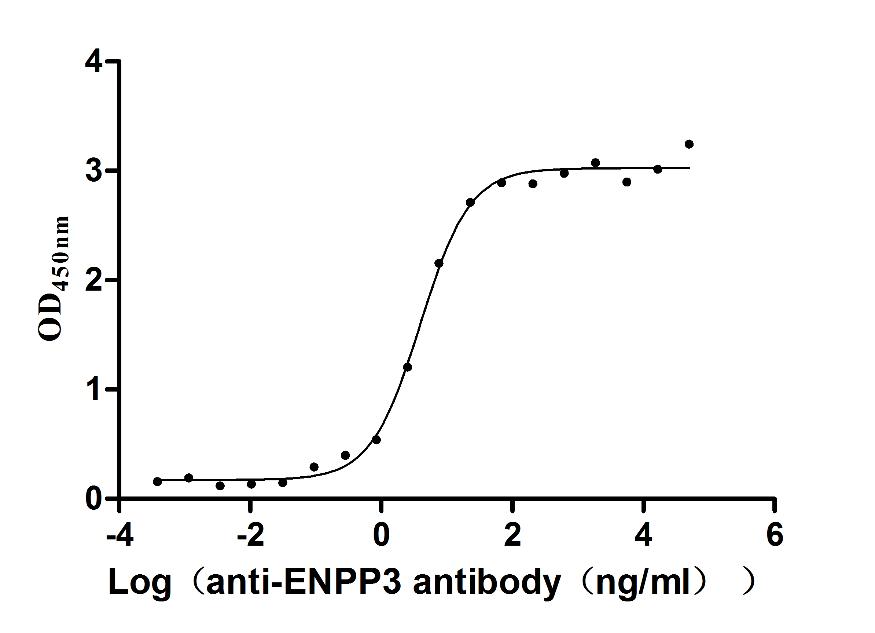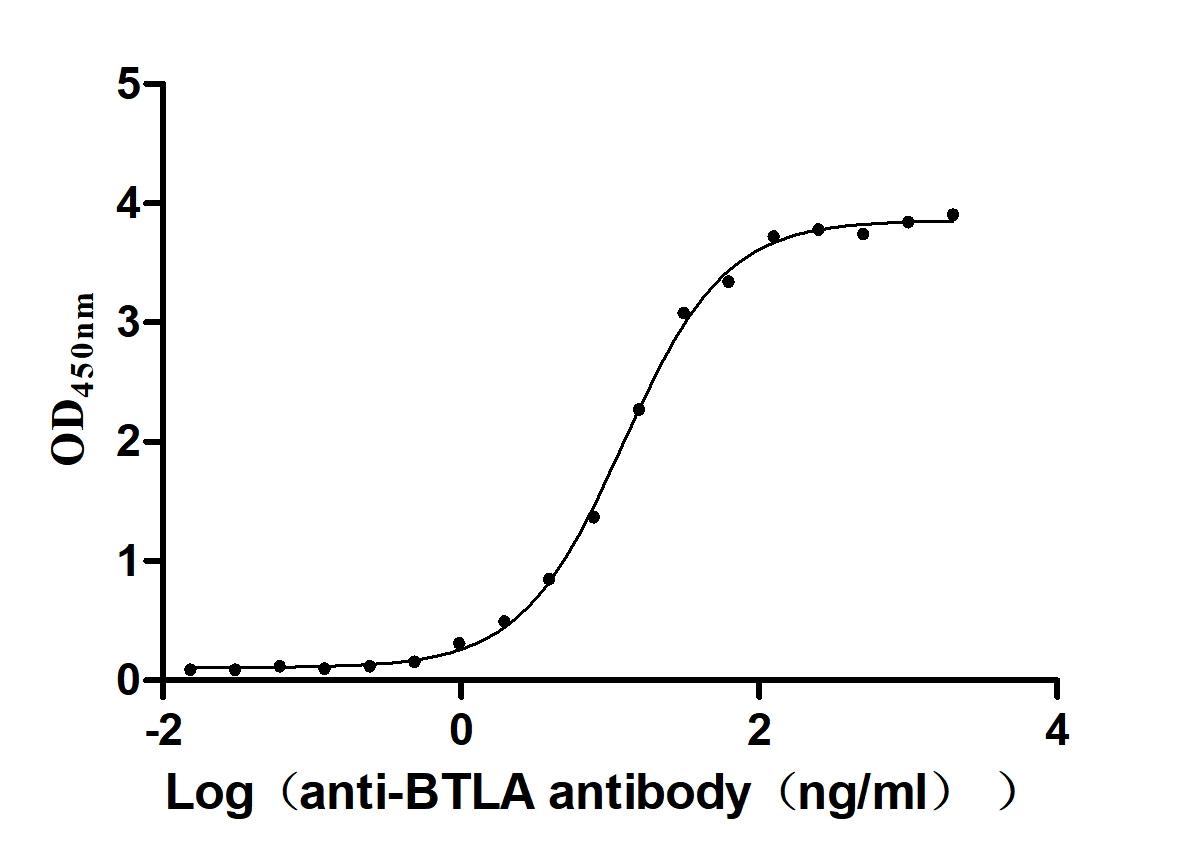Recombinant Encephalomyocarditis virus Genome polyprotein
-
货号:CSB-YP324646EBT
-
规格:
-
来源:Yeast
-
其他:
-
货号:CSB-EP324646EBT
-
规格:
-
来源:E.coli
-
其他:
-
货号:CSB-EP324646EBT-B
-
规格:
-
来源:E.coli
-
共轭:Avi-tag Biotinylated
E. coli biotin ligase (BirA) is highly specific in covalently attaching biotin to the 15 amino acid AviTag peptide. This recombinant protein was biotinylated in vivo by AviTag-BirA technology, which method is BriA catalyzes amide linkage between the biotin and the specific lysine of the AviTag.
-
其他:
-
货号:CSB-BP324646EBT
-
规格:
-
来源:Baculovirus
-
其他:
-
货号:CSB-MP324646EBT
-
规格:
-
来源:Mammalian cell
-
其他:
产品详情
-
纯度:>85% (SDS-PAGE)
-
基因名:N/A
-
Uniprot No.:
-
别名:Genome polyprotein [Cleaved into: Leader protein; L); Capsid protein VP0; VP4-VP2); Capsid protein VP4; P1A; Rho; Virion protein 4); Capsid protein VP2; Beta; P1B; Virion protein 2); Capsid protein VP3; Gamma; P1C; Virion protein 3); Capsid protein VP1; Alpha; P1D; Virion protein 1); Protein 2A; P2A; G); Protein 2B; I; P2B); Protein 2C; C; P2C; EC 3.6.4.13); Protein 3A; P3A); VPg; P3B; H; Protein 3B); Protease 3C; P3C; EC 3.4.22.28; Picornain 3C; p22); RNA-directed RNA polymerase; RdRp; EC 2.7.7.48; 3D polymerase; 3Dpol; E; Protein 3D; 3D)]
-
种属:Encephalomyocarditis virus (strain emc-b nondiabetogenic)
-
蛋白长度:full length protein
-
表达区域:1-67
-
氨基酸序列MATTMEQEIC AHSLTLKGCP KCSALQYRNG FYLLKYDEEW YPEELLTDGE DDVFDPELDM EVVFELQ
-
蛋白标签:Tag type will be determined during the manufacturing process.
The tag type will be determined during production process. If you have specified tag type, please tell us and we will develop the specified tag preferentially. -
产品提供形式:Lyophilized powder
Note: We will preferentially ship the format that we have in stock, however, if you have any special requirement for the format, please remark your requirement when placing the order, we will prepare according to your demand. -
复溶:We recommend that this vial be briefly centrifuged prior to opening to bring the contents to the bottom. Please reconstitute protein in deionized sterile water to a concentration of 0.1-1.0 mg/mL.We recommend to add 5-50% of glycerol (final concentration) and aliquot for long-term storage at -20℃/-80℃. Our default final concentration of glycerol is 50%. Customers could use it as reference.
-
储存条件:Store at -20°C/-80°C upon receipt, aliquoting is necessary for mutiple use. Avoid repeated freeze-thaw cycles.
-
保质期:The shelf life is related to many factors, storage state, buffer ingredients, storage temperature and the stability of the protein itself.
Generally, the shelf life of liquid form is 6 months at -20°C/-80°C. The shelf life of lyophilized form is 12 months at -20°C/-80°C. -
货期:Delivery time may differ from different purchasing way or location, please kindly consult your local distributors for specific delivery time.Note: All of our proteins are default shipped with normal blue ice packs, if you request to ship with dry ice, please communicate with us in advance and extra fees will be charged.
-
注意事项:Repeated freezing and thawing is not recommended. Store working aliquots at 4°C for up to one week.
-
Datasheet :Please contact us to get it.
靶点详情
-
功能:Forms a complex with host RAN and probably binds to exportins carrying activated MAPK in order to mediate the hyperphosphorylation of host Phe/Gly containing nuclear pore proteins (Nups) resulting in cessation of active nucleocytoplasmic transport. Proteins with NLS signals fail to import, cellular mRNAs fail to export, and some proteins small enough for diffusion are not retained anymore (efflux). The resulting inhibition of cellular protein synthesis serves to ensure maximal viral gene expression and to evade host immune response.; Forms an icosahedral capsid of pseudo T=3 symmetry with capsid proteins VP2 and VP3. Together they form an icosahedral capsid composed of 60 copies of each VP1, VP2, and VP3, with a diameter of approximately 300 Angstroms.VP4 lies on the inner surface of the protein shell formed by VP1, VP2 and VP3. All the three latter proteins contain a beta-sheet structure called beta-barrel jelly roll. VP1 is situated at the 12 fivefold axes, whereas VP2 and VP3 are located at the quasi-sixfold axes.; Forms an icosahedral capsid of pseudo T=3 symmetry with capsid proteins VP2 and VP3. Together they form an icosahedral capsid composed of 60 copies of each VP1, VP2, and VP3, with a diameter of approximately 300 Angstroms.VP4 lies on the inner surface of the protein shell formed by VP1, VP2 and VP3. All the three latter proteins contain a beta-sheet structure called beta-barrel jelly roll. VP1 is situated at the 12 fivefold axes, whereas VP2 and VP3 are located at the quasi-sixfold axes.; Forms an icosahedral capsid of pseudo T=3 symmetry with capsid proteins VP2 and VP3. Together they form an icosahedral capsid composed of 60 copies of each VP1, VP2, and VP3, with a diameter of approximately 300 Angstroms.VP4 lies on the inner surface of the protein shell formed by VP1, VP2 and VP3. All the three latter proteins contain a beta-sheet structure called beta-barrel jelly roll. VP1 is situated at the 12 fivefold axes, whereas VP2 and VP3 are located at the quasi-sixfold axes.; Lies on the inner surface of the capsid shell. After binding to the host receptor, the capsid undergoes conformational changes. Capsid protein VP4 is released, capsid protein VP1 N-terminus is externalized, and together, they shape a pore in the host membrane through which the viral genome is translocated into the host cell cytoplasm. After genome has been released, the channel shrinks.; VP0 precursor is a component of immature procapsids.; Involved in host translation shutoff by inhibiting cap-dependent mRNA translation. Nuclear localization is required for this function. The resulting inhibition of cellular protein synthesis serves to ensure maximal viral gene expression and to evade host immune response. Inhibits the phosphorylation of the leader protein. Binds to the RNA stem-loop essential for the ribosomal frameshift event and trans-activates the production of protein 2B*.; Affects membrane integrity and causes an increase in membrane permeability.; Associates with and induces structural rearrangements of intracellular membranes. It displays RNA-binding, nucleotide binding and NTPase activities. Interacts with IFIH1/MDA5 to inhibit the induction of the IFN-beta signal pathway.; Serves as membrane anchor via its hydrophobic domain.; Forms a primer, VPg-pU, which is utilized by the polymerase for the initiation of RNA chains.; Cysteine protease that generates mature viral proteins from the precursor polyprotein. In addition to its proteolytic activity, it binds to viral RNA, and thus influences viral genome replication. RNA and substrate cooperatively bind to the protease. Cleaves host PABP1, this cleavage is important for viral replication. Cleaves host TANK and disrupts the TANK-TBK1-IKKepsilon-IRF3 complex, thereby inhibiting the induction of the IFN-beta signal pathway.; Replicates the genomic and antigenomic RNAs by recognizing replications specific signals. Performs VPg uridylylation.
-
亚细胞定位:[Capsid protein VP2]: Virion. Host cytoplasm.; [Capsid protein VP3]: Virion. Host cytoplasm.; [Capsid protein VP1]: Virion. Host cytoplasm.; [Protein 2A]: Host nucleus, host nucleolus.; [Protein 2B]: Host cytoplasmic vesicle membrane; Peripheral membrane protein; Cytoplasmic side.; [Protein 2C]: Host cytoplasmic vesicle membrane; Peripheral membrane protein; Cytoplasmic side.; [Protein 3A]: Host cytoplasmic vesicle membrane; Peripheral membrane protein; Cytoplasmic side.; [VPg]: Virion.; [Protease 3C]: Host cytoplasm.; [RNA-directed RNA polymerase]: Host cytoplasmic vesicle membrane; Peripheral membrane protein; Cytoplasmic side.
-
蛋白家族:Picornaviruses polyprotein family
Most popular with customers
-
Recombinant Human Heat-stable enterotoxin receptor (GUCY2C), partial (Active)
Express system: Mammalian cell
Species: Homo sapiens (Human)
-
Express system: Mammalian cell
Species: Macaca fascicularis (Crab-eating macaque) (Cynomolgus monkey)
-
Recombinant Macaca fascicularis CD44 antigen (CD44), partial (Active)
Express system: Mammalian cell
Species: Macaca fascicularis (Crab-eating macaque) (Cynomolgus monkey)
-
Recombinant Macaca fascicularis CD93 molecule (CD93), partial (Active)
Express system: Mammalian cell
Species: Macaca fascicularis (Crab-eating macaque) (Cynomolgus monkey)
-
Recombinant Human Oncostatin-M (OSM), partial (Active)
Express system: Mammalian cell
Species: Homo sapiens (Human)
-
Recombinant Human Killer cell immunoglobulin-like receptor 3DL2 (KIR3DL2), partial (Active)
Express system: Mammalian cell
Species: Homo sapiens (Human)
-
Recombinant Human B- and T-lymphocyte attenuator(BTLA), partial (Active)
Express system: Mammalian cell
Species: Homo sapiens (Human)
-
Recombinant Human C-C chemokine receptor type 5 (CCR5)-VLPs (Active)
Express system: Mammalian cell
Species: Homo sapiens (Human)




















